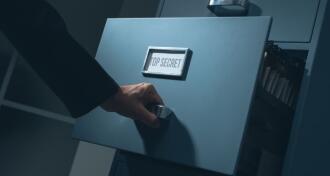Ed. Note: This is the fourth in a series of articles taken from Gavin Parsons' CLE presentation for the North Carolina Bar Association's Antitrust and Complex Business Dispute CLE Program presented on Thursday, January 30, 2025. Here are links to the first, second, and third articles.
The landscape of trade secret damages has evolved dramatically in recent years, with courts awarding unprecedented sums in cases of proven misappropriation.
Recent verdicts, including the $604.9 million award in Propel Fuels v. Phillips 66 (over confidential data, proprietary strategies, and business intelligence regarding low carbon fuels) and the $452 million verdict in Insulet Corp v. EOFlow (involving tubeless insulin pump technology), demonstrate the potential for substantial recovery. However, securing such awards requires a sophisticated understanding of available remedies and a carefully planned approach to proving damages.
Understanding Available Damages Under the DTSA
The federal Defend Trade Secrets Act (DTSA) provides several distinct paths to monetary recovery, each serving different purposes and requiring different types of proof.
At the foundation are actual damages, which compensate for direct losses caused by misappropriation. These often begin with lost profits from sales diverted to competitor,s but can encompass much more. Companies frequently incur substantial costs developing their trade secrets, implementing remedial measures after theft, investigating the scope of misappropriation, and rebuilding damaged customer relationships.
All of these expenses may be recoverable as actual damages when properly documented and linked to the defendant's misconduct.
The challenge in proving actual damages lies in establishing causation. Courts require evidence that specific losses resulted from the misappropriation rather than from other market factors or business conditions. This often necessitates careful analysis of historical performance data, market conditions, and customer behavior patterns to isolate the impact of the misappropriation.
Unjust enrichment provides an additional (or alternative) path to recovery by focusing on the defendant's gains rather than the plaintiff's losses. A plaintiff may recover damages for any unjust enrichment caused by the misappropriation of the trade secret that is not addressed in computing damages for their actual loss.
This approach can be particularly valuable when the defendant's use of the trade secret generated profits beyond what the plaintiff lost. For instance, a defendant might have reached new markets or customers that the plaintiff wouldn't have served, making unjust enrichment damages potentially larger than lost profits alone.
The scope of unjust enrichment can be quite broad. Beyond direct profits from sales, courts recognize that defendants may benefit from reduced development costs, accelerated time to market, improved manufacturing efficiency, and enhanced customer relationships. These benefits can be quantified and recovered even when they haven't yet translated into direct profits.
As an alternative to actual damages and unjust enrichment, courts may award a reasonable royalty. This approach attempts to determine what a willing licensee would have paid a willing licensor for the right to use the trade secret.
Courts examining a reasonable royalty award of damages typically consider numerous factors, including:
- Comparable licensing arrangements in the industry;
- The competitive relationship between the parties;
- The value of the secret to both parties;
- Development costs saved by the defendant;
- The portion of profit attributable to the trade secret and
- Expert analysis of market conditions and value.
Enhanced Recovery Options
Beyond compensatory damages, trade secret law provides for potential recovery of enhanced damages and attorney's fees in cases of particularly egregious conduct. When misappropriation is willful and malicious, courts can award exemplary damages up to twice the amount of compensatory damages.
Evidence of deliberate theft, attempts to cover up misappropriation, violation of court orders, or continued use after receiving notice can support such awards.
Attorneys' fees represent another important component of potential recovery.
These become available in cases involving willful and malicious misappropriation or bad faith litigation conduct. The availability of attorneys' fee awards can significantly impact litigation strategy and settlement dynamics, particularly in cases where proving damages may be challenging but liability (misconduct) is clear.
Permanent Injunctive Relief and Alternative Remedies
While monetary damages often take center stage, injunctive relief remains a crucial remedy in trade secret cases.
Parties typically begin a trade secret case by seeking a temporary restraining order and then a preliminary injunction. These orders prohibit a defendant from using a trade secret while litigation is pending up through trial.
However, at the conclusion of a case, parties can also seek an injunction that will prohibit the disclosure of the trade secret permanently and/or the use of the trade secret. Courts typically will permanently enjoin a defendant from sharing a trade secret, but an injunction on use of the trade secret is normally less permanent. Courts structure "permanent" injunctions regarding the use of a trade secret around the concept of a "head start" period – the time it would have taken the defendant to independently develop the trade secret. This approach aims to eliminate any unfair advantage gained through misappropriation, while recognizing that trade secrets don't confer perpetual monopolies.
In some situations, courts may order ongoing royalty payments instead of a permanent injunction. This usually occurs when completely barring use of the trade secret would be inequitable or against the public interest. For instance, if the defendant has incorporated the trade secret into products serving essential public needs, a court might prefer a royalty solution over an injunction.
Building a Strong Damages Case
Successfully proving damages requires careful preparation from the earliest stages of the case. Early case assessment should examine potential damages theories and identify necessary evidence before critical information is lost. This initial analysis helps guide discovery requests, identify necessary experts, and make strategic decisions about settlement parameters.
Selection of expert witnesses proves crucial in most trade secret cases. Beyond technical expertise, damages experts need strong communication skills and the ability to present complex financial analyses in understandable terms.
Damages experts should be involved early enough to help shape discovery and document preservation efforts.
Documentation becomes particularly important in trade secret cases because of the need to establish both the secret's value and the impact of its misappropriation.
Companies should maintain detailed records of development costs, efforts, and associated expenses to maintain secrecy, value derived from the secret, affected customer relationships, market impact, and remedial measures taken. This documentation helps demonstrate both the existence of damage and its quantum.
Strategic Considerations for Maximum Recovery
Several strategic considerations can significantly impact ultimate recovery in trade secret cases.
First, maintaining multiple theories of recovery throughout trial provides maximum flexibility. Courts typically allow plaintiffs to elect their preferred theory of recovery (actual damages vs. unjust enrichment vs. reasonable royalty) after all evidence is presented, so preserving all viable theories until that point maximizes potential recovery.
The international reach of trade secret claims presents another strategic consideration. The DTSA can reach conduct outside the United States when any act in furtherance of misappropriation occurs domestically. This allows recovery of damages from foreign sales or use when there's a U.S. nexus, potentially expanding the scope of recovery significantly.
Timing considerations permeate trade secret damages analysis. Key questions include when misappropriation began, when it should have been discovered, the appropriate "head start" period, and the commercial life of the secret. These temporal factors can significantly impact the calculation of both damages and the scope of injunctive relief.
Looking Forward
The complexity of trade secret damages demands careful attention from the outset of any potential case. Success requires understanding available theories of recovery, maintaining necessary documentation, and building strong expert support.
While recent high-value verdicts demonstrate the potential for substantial recovery, achieving such results requires methodical preparation and strategic presentation of damages evidence.
Our final article will explore preventive measures and best practices for protecting trade secrets before misappropriation occurs, completing our comprehensive examination of trade secret protection and enforcement.









